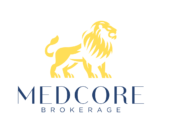Is It Cheaper to Self-Insured Employee Medical Plans?
- May 24, 2025
- Posted by: admin
- Category: Medical Insurance

When it comes to offering health insurance, employers face a critical choice: fully insured vs. self-insured (or self-funded) health plans. The decision has significant financial implications, and many companies are now asking, Is it cheaper to self-insured employee medical plans?
This article explores the core differences, benefits, risks, and key cost-saving factors of self-insurance. If you’re an employer aiming to optimize your healthcare spend, this guide is tailored for you.
What Does Self-Insurance Mean?
A self-insurance health plan means the employer takes on the financial risk of providing health benefits to employees. Instead of paying fixed premiums to an insurance carrier, the employer pays for medical claims as they occur.
Two Types of Self-Insurance:
- Fully Self-Insured: Employer assumes complete financial responsibility for claims.
- Partially Self-Insured (Level-Funded): Combines self-insurance with stop-loss insurance to manage risk.
How Self-Insured Plans Work
Here’s a simplified breakdown of how a self-insurance health plan operates:
- The employer sets up a health plan tailored to employee needs.
- Instead of paying premiums, the employer sets aside money for expected claims.
- Claims are processed by a third-party administrator (TPA).
- Stop-loss insurance is purchased to limit catastrophic losses.

Is Self-Insurance Really Cheaper?
The short answer: It can be if managed properly. Here’s why self-insured plans may offer cost savings:
1. Elimination of Insurance Carrier Profit Margins
Fully insured plans include carrier overhead and profit margins. Self-insured employers bypass these extra costs.
2. Tailored Plan Design
Employers can customize benefits, networks, and cost-sharing strategies based on workforce needs, often improving efficiency and utilization.
3. Improved Cash Flow
With no upfront premiums, cash outflows are aligned with actual claims. This improves liquidity and capital management.
4. Claims Transparency
Access to claims data allows for analytics-driven decisions, unlike opaque premium-based models.
5. Avoidance of State Premium Taxes
Self-insured plans are regulated federally under ERISA, meaning state health insurance premium taxes (2–3%) don’t apply.
6. Potential Refunds from Stop-Loss Policies
If claims are lower than expected, employers may receive refunds from level-funded arrangements.

Risks of Self-Insurance
Despite potential savings, self-funding isn’t risk-free. Here are key considerations:
1. Claim Volatility
Large, unexpected medical claims can strain budgets, especially for small to midsize employers.
2. Compliance Burden
Self-insured employers must navigate complex federal regulations (ERISA, HIPAA, ACA).
3. Administrative Complexity
Managing TPAs, stop-loss carriers, and vendors requires oversight and healthcare literacy.
4. Financial Risk Management
Even with stop-loss coverage, employers must cover claims up to a certain deductible, which can be high.
Who Should Consider Self-Insuring?
While large employers have historically favored self-insurance, smaller companies (as few as 25 employees) are now exploring level-funded options.
Ideal candidates for self-insurance include:
- Companies with a young, healthy workforce
- Employers with strong cash reserves
- Businesses seeking more control and data access
- Organizations are willing to engage in proactive risk management.

Self-Insured vs. Fully Insured: Cost Comparison
| Feature | Fully Insured | Self-Insured |
|---|---|---|
| Premiums | Fixed monthly payments | Variable claims costs |
| Plan Flexibility | Limited customization | Highly customizable |
| Cash Flow | Upfront costs | Pay-as-you |
| Claims Data | Restricted access | Full transparency |
| Risk Exposure | Carrier absorbs risk | Employer absorbs risk |
How to Control Costs in a Self-Insured Plan
To truly save money, employers must actively manage their self-insured plans. Here are proven cost-control strategies:
- Implement wellness and chronic care programs
- Use direct primary care (DPC) models
- Negotiate directly with local providers
- Adopt reference-based pricing strategies
- Review claims monthly and adjust plan design annually
Stop Loss Insurance: Your Safety Net
Stop-loss insurance protects self-insured employers from high claims. It comes in two forms:
- Specific Stop-Loss: Caps costs per individual (e.g., $50,000 per person)
- Aggregate Stop-Loss: Caps total annual claims for the group
This coverage is essential for managing catastrophic risk and maintaining budget stability.
Real-Life Case Study
Company X: A 150-employee tech firm moved from a fully insured plan to a level-funded plan. In Year 1, they saved 18% on healthcare costs. How?
- Redesigned their plan with fewer copays but strong primary care incentives
- Introduced telehealth and mental wellness tools
- Monitored claims monthly and made mid-year adjustments
Compliance Checklist for Self-Insured Employers
- Comply with ERISA, ACA, COBRA, HIPAA, and GINA
- Distribute Summary Plan Descriptions (SPDs)
- File Form 5500 annually (if applicable)
- Maintain plan documentation and fiduciary policies.
Why choose Medcore Brokerage
If you find yourself uncertain about how to begin self-insuring your employee medical plans, you are not alone. The process of navigating plan design, regulatory obligations, and financial risks can be minimized.
Therefore, it is essential to collaborate with a reliable advisor who comprehends the intricacies of employee benefits.
Medcore Brokerage, the Best Employee Benefits Consultant in Texas, can help. We specialize in delivering tailored employee benefits solutions designed to meet the unique needs of your business.
Whether you’re exploring self-insurance for the first time or looking to improve an existing strategy, our team is here to guide you every step of the way.
Expert Editorial Comment
Self-insured employee medical plans offer meaningful cost savings, increased transparency, and greater control over your employee health benefits. Employers who adopt this model can tailor their plans to better suit workforce needs, avoid unnecessary premiums, and gain real-time insight into healthcare spending.
These advantages make self-funding an attractive option, especially in a healthcare environment where costs are rising and customization is increasingly valued by employees.
Nevertheless, self-insurance does not serve as a universal remedy. It necessitates a thorough evaluation of various elements, such as your organization’s risk appetite, cash flow consistency, employee count, and the general well-being of your workforce. Employers must also be ready to handle claims data, collaborate with third-party administrators, and uphold regulations.
Frequently Asked Questions
What is a self-insured health plan?
A self-insured plan is where an employer pays medical claims directly instead of purchasing traditional insurance.
Is self-insurance cheaper than fully insured plans?
Yes, it can be more cost-effective if claims are low and managed properly.
What is stop-loss insurance?
Stop-loss insurance protects employers from extremely high individual or total claims.
Can small businesses self-insure?
Yes, especially through level-funded plans designed for smaller employers.
What are the risks of self-insuring?
Key risks include unpredictable claims and higher administrative responsibilities.
How does self-insurance improve cash flow?
Employers only pay for actual claims, not fixed premiums, improving cash flexibility.
Who manages a self-insured plan?
Third-party administrators (TPAs) typically handle claims processing and plan administration.
Are self-insured plans subject to state laws?
No, they’re governed by federal ERISA laws and exempt from most state insurance mandates.
Can I customize a self-insured plan?
Yes, employers have full flexibility over plan design, networks, and coverage.
When should I consider switching to self-insurance?
When your business is financially stable and looking to control rising healthcare costs.

